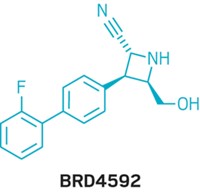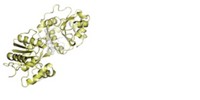Advertisement
Grab your lab coat. Let's get started
Welcome!
Welcome!
Create an account below to get 6 C&EN articles per month, receive newsletters and more - all free.
It seems this is your first time logging in online. Please enter the following information to continue.
As an ACS member you automatically get access to this site. All we need is few more details to create your reading experience.
Not you? Sign in with a different account.
Not you? Sign in with a different account.
ERROR 1
ERROR 1
ERROR 2
ERROR 2
ERROR 2
ERROR 2
ERROR 2
Password and Confirm password must match.
If you have an ACS member number, please enter it here so we can link this account to your membership. (optional)
ERROR 2
ACS values your privacy. By submitting your information, you are gaining access to C&EN and subscribing to our weekly newsletter. We use the information you provide to make your reading experience better, and we will never sell your data to third party members.
Synthesis
Allosteric Control Enables Methicillin Resistance
Ligands, including an antibiotic, control access to the active site of a key methicillin-resistant bacterial protein
by Celia Henry Arnaud
October 7, 2013
| A version of this story appeared in
Volume 91, Issue 40
Penicillin binding proteins (PBPs) catalyze two reactions that are needed to form bacterial cell walls. β-Lactam antibiotics shut down one of these reactions by irreversibly acylating a serine unit in a protein’s active site. Methicillin-resistant Staphylococcus aureus, or MRSA, expresses a form of this protein, PBP2a, that is resistant to β-lactams. Shahriar Mobashery of the University of Notre Dame, Juan A. Hermoso of the Spanish National Research Council, and coworkers now report that an allosteric binding site controls access to PBP2a’s active site for both its natural substrate and β-lactam antibiotics (Proc. Natl. Acad. Sci. USA 2013, DOI: 10.1073/pnas.1300118110). When the allosteric site is occupied, the enzyme undergoes a conformational change that opens the active site 60 Å away, which is considered a long distance for a protein allosteric effect. X-ray crystallography structures reveal that muramic acid, peptidoglycan from the cell wall, and the β-lactam antibiotic ceftaroline can all serve as allosteric ligands. For example, when one ceftaroline molecule binds, it paves the way for a second molecule to inactivate the enzyme. The ability of an antibiotic to open the active site suggests a new route for structure-based drug design.





Join the conversation
Contact the reporter
Submit a Letter to the Editor for publication
Engage with us on Twitter